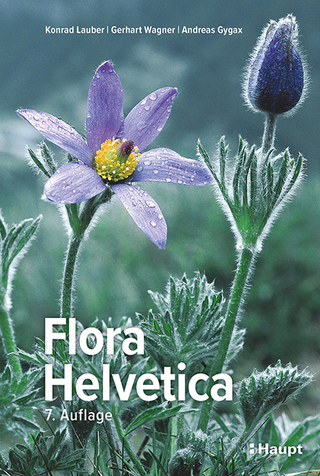
Reinvention of Australasian Biogeography
CSIRO Publishing (Verlag)
978-1-4863-0483-7 (ISBN)
Biogeography, the study of the distribution of life on Earth, has undergone more conceptual changes, revolutions and turf wars than any other scientific fields. Australasian biogeographers are responsible for several of these great upheavals, including debates on cladistics, panbiogeography and the drowning of New Zealand, some of which have significantly shaped present-day studies.
Australasian biogeography has been caught in a cycle of reinvention that has lasted for over 150 years. The biogeographic research making headlines today is merely a shadow of past practices, having barely advanced scientifically. Fundamental biogeographic questions raised by naturalists a century ago remain unanswered yet are as relevent today as they were then. Scientists still do not know whether Australia and New Zealand are natural biotic areas or if they are in fact artifical amalgamations of areas. The same question goes for all biotic areas in Australasia: are they real?
Reinvention of Australasian Biogeography tells the story of the history of Australasian biogeography, enabling understanding of the cycle of reinvention and the means by which to break it, and paves the way for future biogeographical research.
Features
Presents the theory and foundations of biogeography, a contentious scientific field
Explores the science of biogeography and the important role that it plays in the history and future of Australasia
Examines the story of biogeography; the divisions, conflicts, disputes and what the future may hold
.
Malte C. Ebach is a Senior Lecturer in Biogeography at the University of New South Wales, Australia. He has published extensively on the history, theory and methodology of biological systematics, taxonomy and biogeography. He is an Associate Editor for the Journal of Biography, Australian Systematic Botany, Editor of Zootaxa and Phytotaxa, and Editor-in-Chief of the CRC Biogeography Book Series. In 2010, Malte and his co-author Lynne R. Parenti were recipients of the Smithsonian's Secretary Prize for the textbook Comparative Biogeography: Discovering and Classifying Biogeographical Patterns of a Dynamic Earth.
Foreword
Prologue
Acknowledgements
Chapter 1: Studying the distribution of life on Earth
The search for natural biotic areas
Cladistics: the search for natural taxa and their relationships
Cladistic biogeography: the search for natural areas and
their relationships
What is an area? Establishing the cladistic biogeographic method
How to do cladistic biogeography (or how to start reforming)
Reform and the three phases of biogeography
Chapter 2: Biogeography comes to Australasia
Biological classification and biogeography: a condensed history
The two area classifications: the triumph of Humboldt's plant
geography
Australian biogeography: flora, fauna, elements and biomes
The need for testable hypotheses
Chapter 3: Carving up Australasia: the quest for natural biogeographic regions
Is New Zealand a zoological region?
Are Australia’s regions artificial?
Reinvention thesis and bioregionalisation
Chapter 4: The spectre of cladism: cladistics in the Land of Oz
The cladistics war
Early Australasian practitioners and critics of numerical cladistics
Transformed cladistics in the Land of Oz
Cladistics in Australian palaeontology
Chapter 5: A new biogeography: the panbiogeography revolt in New Zealand
Panbiogeography: Earth and life evolving together
The development of panbiogeography in New Zealand (1978–1989)
Panbiogeography and its reformation
Chapter 6: Goodbye Gondwana: the drowning of Zealandia and the
rise of neodispersalism
New Zealand: archipelago, island continent or oceanic island?
The New Zealand drowning hypothesis: towards an integrative
biogeography
Integrative biogeography: an undisciplined discipline?
Chapter 7: All possible futures
Entering the analytical phase: testing the link between evidence and
hypothesis
Extending Ball's criteria: invasions, drowning and neodispersalism
Towards the analytical phase and biogeographic discovery
A future of Australasian biogeography ending the cycle of reinvention
Framing biogeographic problems using the taxonomy analogy
Glossary
Endnotes
References
Index
| Erscheinungsdatum | 21.01.2017 |
|---|---|
| Zusatzinfo | Illustrations |
| Verlagsort | Melbourne |
| Sprache | englisch |
| Maße | 170 x 245 mm |
| Gewicht | 493 g |
| Themenwelt | Naturwissenschaften ► Biologie ► Botanik |
| Naturwissenschaften ► Biologie ► Ökologie / Naturschutz | |
| Naturwissenschaften ► Biologie ► Zoologie | |
| ISBN-10 | 1-4863-0483-4 / 1486304834 |
| ISBN-13 | 978-1-4863-0483-7 / 9781486304837 |
| Zustand | Neuware |
| Haben Sie eine Frage zum Produkt? |
aus dem Bereich


